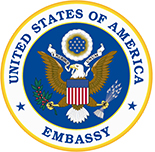Madagascar does not have the Eiffel Tower that Paris in France is famous for; it does not have the Statue of Liberty that New York in the United States is proud of; it does not have the Great Wall of China or the Pyramid of Egypt that attract many tourists to travel there, relics made only by the hand of man. But the unique treasure of Madagascar, which has existed for nearly 50 million years, are the lemurs.
While the panda of China and kiwi of New Zealand are famous, as are the kangaroo of Australia, lemurs are inarguably Madagascar's golden goose. To this day, Madagascar hosts 112 species of lemurs, all of which are native to the country and account for 20 percent of the world's primates. All lemurs use natural forest as their habitat, but less than 10 percent of the natural forest remains today. The endangerment of these lemurs is therefore very high as 95 percent of them are already threatened with extinction.
All lemurs are protected species and are legally protected, however there are still those who hunt them for food and livestock. However, the biggest problem they face and cause their extinction is mainly fire. Each year, more than 30,000 hectares of forest are burned and it is believed that many lemurs die as a result. As an example, the location of the smallest primate on the earth, Microcebus berthae in the protected area of Menabe Antimena, where the famous baobab avenues are found, is likely to disappear within the next 4 years.
Since October 2014, we have been celebrating the World Lemur Festival and the National Lemur Day has been announced by the Ministry of Environment and Natural Resources to be celebrated every last Friday of October since 2020. Indeed, the protection of lemurs is the duty and responsibility of all citizens. All citizens must know that they are a national treasure and in 2021, the theme chosen was: “Lemurs: Neither food nor livestock but a pillar of the forest.”
As part of the school program, from kindergarten on, Malagasy children must be introduced to the unique treasures of their country, including lemurs. People must be made aware that they are not allowed to hunt, eat or breed them without proper authorization.
We must continue to promote nature tourism to see lemurs and encourage people to enjoy these natural resources.
Like many countries that use their distinctive animals as a republican logo such as the American bold eagle; Senegalese lions; Ivorian elephants etc. lemurs should also be the emblem of the Malagasy Republic, not the zebu which is not indigenous to Madagascar. Likewise with the logos of the Gendarmerie, the Military Engineering and the University of Antananarivo, which are still the zebu, they should be changed into lemurs, an animal indigenous and unique to Madagascar.
In addition to being a valuable resource specific to Madagascar, lemurs are also a pillar of the forest as they are key agents of pollination and seed dispersal. Some tree species must pass through the bowels of lemurs for the native tree to grow quickly.
Madagascar without lemurs would not be Madagascar. Therefore let us protect the lemurs.



